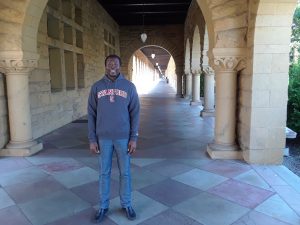In spring 2019 I had the pleasure to visit Estonian Business School (EBS) in Tallinn, Estonia, and Josip Juraj Strossmayer University in Osijek, Croatia. During these visits I held a course, had presentations and met interesting people, but how did all this come about?
In spring 2018 I met in Turku two researchers from Osijek, who were interested in SME internationalization. Our research interests came together nicely and we decided to meet again. Next thing I got an invitation to visit Osijek in spring 2019. In early 2019 I got an email from a colleague in EBS asking about the opportunity to organize a course on qualitative research methods for doctoral students in Tallinn. Naturally, I could not resist the opportunity to talk passionately about methods to yet new victims.
Here is when the Erasmus+ Teacher Exchange stepped in. This European-level financing instrument is targeted for university teaching staff, who wish to gain more teaching experience and particularly experience in teaching in a foreign university. I had excellent time in my exchanges, and can warmly recommend this experience. But this comes with a grain of salt; the Erasmus funding application procedure and the instructions were not always the clearest and the financial support one receives may barely cover the travel, accommodation and daily allowance costs. This made me admittedly wonder during the process whether the hours spent in getting all the paperwork done at your home and the inviting institution with all the appendices before and after the visit were worth it. A lesson learned from here is that one should also apply for additional funding from other sources to make sure that after the exchange the remaining costs do not land on your own desk. This nearly happened to me.
If you are a doctoral student or a post doc in need for a CV entry, extension of your teaching skills, looking for new international experiences or wishing to meet colleagues in European universities alongside teaching, the Erasmus+ teacher Exchange could be the right choice for you. It is a good instrument for a first visit, but in case you plan to return and perhaps make your foreign visit to the target university an annual tradition, obtaining e.g. a visitor status could be advisable. This would enable you to also obtain some compensation for the teaching and course/lecture preparation you have conducted in the destination and establish your visitor status in the host institution.
In addition to the aforementioned, the teacher exchange can also result in something more. My visit to Osijek supported and strengthened a research collaboration that is still ongoing, and at EBS I have been asked to organize the course again next spring. And as a bonus, I was humbled at EBS by the Best Visiting Lecturer award in 2018-2019 academic year. Importantly, on top of these, you have also the great opportunity to meet new people, make new contacts, visit new places, see new things and broaden your network. Private flights and tiny airports, missing and eventually found luggage, birds sitting on your lunch, and getting lost in a changed city may also characterize your exchange, but that is another story.
To conclude informatively, the University of Turku university services and international office offers further information (and they reply to emails rather swiftly) and the websites on staff mobility and Erasmus collaboration give instructions for the practicalities and guidelines for application.
Eriikka Paavilainen-Mäntymäki
Associate Professor, International Business

Recent Comments